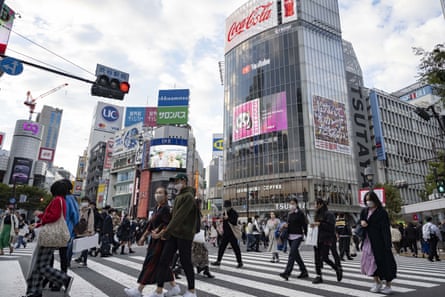Paradise paused: Asia-Pacific tourism continues to lag after the Covid induced
Mari Kishigawa’s family have been in the tourism business for decades. In the remote Pacific country of Palau, on an even more remote archipelago, Mari runs the 11-room Carp Island Resort, a 30km boat journey from Palau’s commercial centre, Koror.
But beneath canopies of palm trees, bordered by crystal clear water, Mari is reassessing her future.
“If I had financing, I would have changed my business to house rental instead of a tourism-related business.”
The Covid-19 pandemic and the rising cost of living have battered her business.
“Even though the border is open, we are still having a hard time getting customers. Our resort uses a generator for electricity, so even without customers, I still need money to buy diesel and to bring a speed boat to the island weekly – for food, diesel, gasoline.”
Prior to 2020, Palau welcomed an average of 118,000 visitors a year, with tourism the main contributor to the economy. This year though, fewer than 10,000 visitors have come, according to the ministry of finance.
It’s a pattern that’s repeated across the Asia-Pacific, where governments have struggled to turnaround the steep decline in visitor numbers, brought on by the pandemic. Hopes are high that tourists will return over the festive period, but cost of living concerns and China’s strict zero-Covid policy are threatening to derail progress.
Visitor arrivals slow to bounce back
International arrivals and occupancy rates at hotels across the region still lag far behind their pre-pandemic levels, despite European hotspots like France and Greece experiencing a high volume of visitors over the course of the northern hemisphere summer.
The tourism industry in some nations has been hampered by restrictive Covid-19 measures that have only been lifted in recent months.

Japan’s government is aiming to attract 5tn yen ($34.5bn) of annual tourist spending after reinstating visa-free travel for dozens of countries in October. However analysts predict that spending from overseas visitors will reach just 2.1tn yen ($14bn) by 2023 and won’t exceed pre-Covid levels until 2025.
Even in countries that lifted Covid-19 restrictions early, visitor numbers are still well below where they once were.
Thailand began to reopen its borders in November 2021, with hopes to attract 15 million visitors in 2022. It has since revised those numbers down: tourism arrivals this year are expected to be closer to 10 million, compared with nearly 40 million visitors in 2019.
The Indonesian island of Bali is one of the world’s most popular tourist destinations, but its visitor numbers are still far lower than prior to the pandemic. In August 2022, 276,000 foreign tourists arrived in Bali; that’s compared with 606, 000 in the same month in 2019.
Figures like these are at odds with some European destinations which saw business come booming back through the northern hemisphere summer. In July and August of this year, occupancy rates in French hotels were actually above the levels recorded in the same month in…
Read More: Paradise paused: Asia-Pacific tourism continues to lag after the Covid induced
